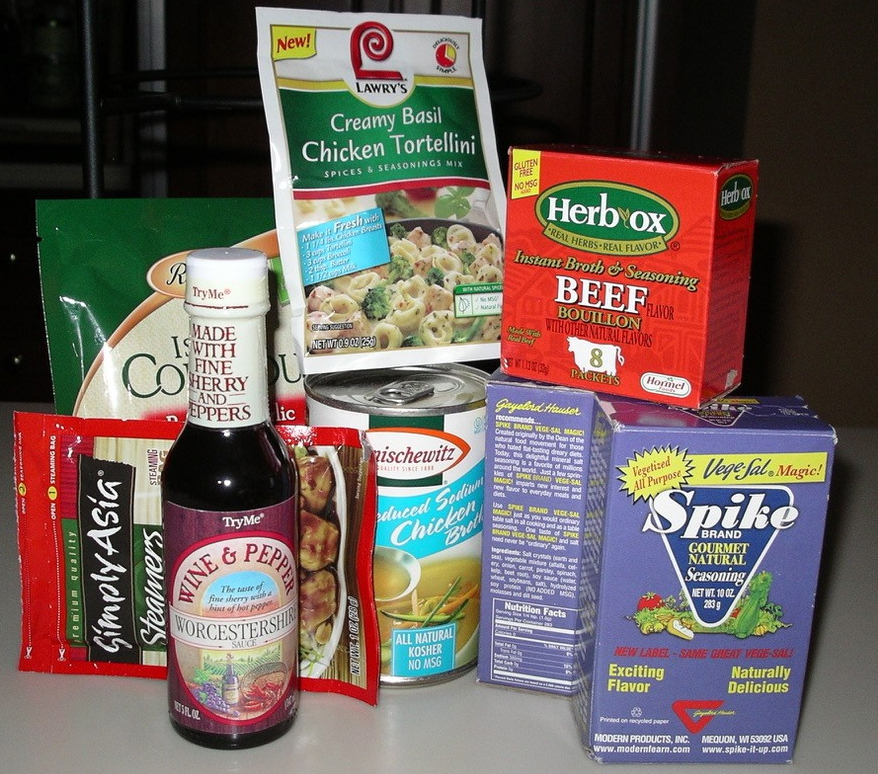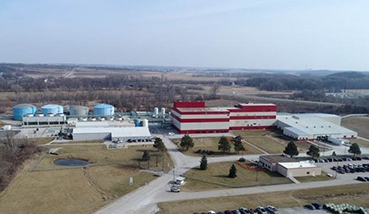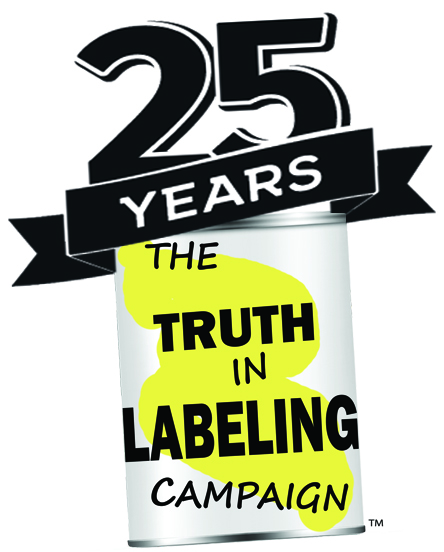It’s not an allergen as defined by the FDA, so it won’t be singled out on ingredient labels of processed foods as something vulnerable consumers have to watch out for. It’s also not identified as an artificial flavor by the FDA. Rather, when referred to as a flavor enhancer it’s called “natural” or “naturally occurring.”
But all that has nothing to do with the product’s safety and everything to do with the wealth, power and political connections of the people who manufacture and market the excitotoxic – brain damaging – amino acid that the glutamate industry declares is just a harmless ingredient used in a multitude of food additives.
You know it best as monosodium glutamate (MSG), but the world is slowly catching on to the fact that autolyzed yeast, calcium and sodium caseinates, maltodextrin, and the hydrolyzed protein products, for example, contain excitotoxic glutamate just as MSG does. And it’s the manufactured free glutamate (MfG) in MSG and in these other ingredients that causes brain damage, gross obesity and infertility, and plays a role in triggering asthma, fibromyalgia, migraine headache, skin rash and seizures as well.
MSG is a man-made product composed of L-glutamic acid (L-glutamate), sodium, moisture, D-glutamic acid (D-glutamate), pyroglutamic acid, and other impurities (unwanted and unavoidable by-products of the manufacture of L-glutamate). MSG is manufactured in plants throughout the world. In the United States, MSG is produced in Ajinomoto’s factory in Eddyville, Iowa. Its principal ingredient is its excitotoxic – brain damaging — glutamate.
L-glutamate is the L enantiomer of glutamic acid (glutamate), an amino acid which when present in protein or released from protein in a regulated fashion (through routine digestion) is vital for normal body function. It is the principal neurotransmitter in humans, carrying nerve impulses from glutamate stimuli to glutamate receptors throughout the body. Yet, when present outside of protein in amounts that exceed what the healthy human body was designed to accommodate — an amount now readily available in a diet of processed foods — glutamate becomes an excitotoxic neurotransmitter, firing repeatedly, damaging targeted glutamate-receptors and/or causing neuronal and non-neuronal death by over exciting those glutamate receptors until their host cells die.
It’s truly a grand scheme for deceiving the public. There’s a toxic substance used in scores of processed foods, and because it’s a constituent of an ingredient (like arsenic in rice would be), poisonous or not, it won’t be disclosed on food labels.
FDA/industry cooperation goes back to 1958, when “monosodium glutamate” was first deemed “safe” by the FDA. Deemed to be safe because prior to the institution of the GRAS classification in 1958, there had been no record of adverse reactions to “monosodium glutamate,” which had not been tested for safety. Looking back, with hindsight as our guide, we now understand what took place. In 1957, the method for producing monosodium glutamate had been changed from the slow and costly method of extracting glutamate from protein (for which there were no reports of adverse reactions) to a method of bacterial fermentation which not only created a different product, but allowed for virtually unlimited production of glutamate and MSG.
The first record of FDA/industry cooperation/collusion that we have in our files is from September of 1969, when then FDA Commissioner Ley testified before the Senate Select Committee on Nutrition and Health, presenting evidence from four studies that, he alleged, demonstrated that MSG was safe. It was later disclosed that two of the studies Commissioner Ley cited were incomplete and two did not even exist.
Before 1969, there had been no need for FDA/industry cooperation/collusion. It was not until 1968 that the first report of adverse reactions to monosodium glutamate was published in The New England Journal of Medicine, and not until 1969 that the first evidence that monosodium glutamate caused brain lesions and endocrine disorders in experimental animals was published in Science.
The FDA has built and then reinforced its case for the “safety” of MSG on misleading and deceptive studies sponsored by the glutamate industry. FDA regulations require that those who manufacture food additives must provide evidence demonstrating that they are “safe.” The glutamate industry has, indeed, presented evidence, but they have falsified data — not by changing test scores or research results, but by rigging the procedures used in conducting their studies so that only after careful scrutiny would one discern that their studies were flawed to the point of being fraudulent.* Glutamate industry studies are generally methodologically inadequate, statistically unsound, and/or irrelevant to the safety/toxicity of MSG. Researchers have gone so far as to use aspartame and/or MSG in placebos to cause subjects to respond to placebos just as they would respond to monosodium glutamate test material. In addition, industry’s researchers have been known to draw conclusions that did not follow from the results of their studies.
Over the course of the last 46 years, the FDA has summarily dismissed much of the research that clearly demonstrates that MSG places humans at risk. They don’t counter it. They simply ignore it. Reports of adverse reactions to MSG collected by its own Adverse Reactions Monitoring System have been dismissed because “they could have been caused by something else.”
The FDA has suppressed results of studies that might suggest that use of MSG places humans at risk. The FDA suppressed results of its own study that suggested that use of free glutamic acid in supplements is unsafe. In a July 1992, report to the FDA, the Federation of American Societies for Experimental Biology (FASEB) had concluded, in part, that: “…it is prudent to avoid the use of dietary supplements of L-glutamic acid by pregnant women, infants, and children…. and…by women of childbearing age and individuals with affective disorders.” (MSG is called L-glutamic acid when used in supplements.) Mention has not been made of those recommendations – not to the medical community or anywhere else.
Yes, a truly a grand scheme for deceiving the public.
*The term ‘fraud’ is generally defined in the law as an intentional misrepresentation of material existing fact made by one person to another with knowledge of its falsity and for the purpose of inducing the other person to act, and upon which the other person relies with resulting injury or damage. [Fraud may also include an omission or intentional failure to state material facts, knowledge of which would be necessary to make other statements not misleading.] Accessed on 11/4/2010 at the ‘Lectric Law Library’s Lexicon.
If you have questions or comments, we’d love to hear from you. And if you have hints for others on how to avoid exposure to MfG, send them along, too, we’ll put them up on Facebook. You can also reach us at questionsaboutmsg@gmail.com and follow us on Twitter @truthlabeling
Resources
Samuels A. (2020) Dose dependent toxicity of glutamic acid: a review, International Journal of Food Properties, 23:1, 412-419, DOI: 10.1080/10942912.2020.1733016
http://dx.doi.org/10.1080/10942912.2020.1733016
Excitotoxicity and cell damage https://www.sciencedaily.com/terms/excitotoxicity.htm
Ischemia-Triggered Glutamate Excitotoxicity From the Perspective of Glial Cells https://www.frontiersin.org/articles/10.3389/fncel.2020.00051/full














